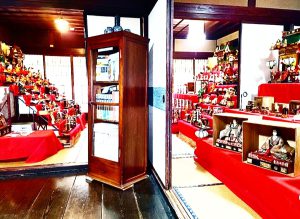タイトル:小さな祈りの住むところ
- 2024.12.09
- 月刊芳美
タイトル:小さな祈りの住むところ
古びた仏像が集まる幼稚園がある。そこは木材で作られた平屋の建物で、園児たちは裸足で駆け回り、笑い声が絶えない。園長である住職の「陽光先生」は、拾い集めた仏像を園の事務所に並べており、その背中にはいつも不思議な温かさと威厳が漂っていた。
1. 不思議な園長先生
陽光先生は、園児たちに宗教的な教義を直接教えることはなかった。彼がするのは、ただ一緒に遊ぶこと。時には鬼ごっこをし、時には木の枝で即興の楽器を作って演奏会を開く。園児たちは彼を「お坊さん先生」と呼び、慕っていた。
しかし、陽光先生が事務所に入ると空気は一変する。古びた仏像たちが無言で並び、その間を歩く先生は、まるで彼らと会話をしているかのようだった。その様子を見たある園児がぽつりと言った。
「先生、あの仏様たち、みんな悲しい顔してる。」
陽光先生は微笑んで答えた。「そうかな?私は、みんな笑っているように見えるよ。」
2. 仏像たちの秘密
仏像たちは、陽光先生が街中やゴミ置き場で拾い集めてきたものだった。傷つき、捨てられた仏像を見て、陽光先生はどうしても放っておけなかったという。
「どんなに壊れていても、誰かの祈りがこもっている。祈りは消えないんだよ。」
その言葉を聞いた園児たちは、こっそり仏像に手を合わせるようになった。いつしか、仏像は園児たちにとって「特別な友達」になり、先生がいなくても誰かがそっと声をかけるようになった。
3. 来客の視点
ある日、一人の男性が幼稚園を訪れた。男性は少し固い表情をしており、古びた仏像が並ぶ事務所に驚きを隠せなかった。
「これを園児たちに見せる意味は何ですか?」
陽光先生は朗らかに笑った。「意味を作るのは見る人です。私はただ、ここに居場所を作っただけ。」
男性はその言葉に少し困惑しながらも、園内を見て回った。裸足で走り回る園児たち、園庭で笑い転げる職員たち。その伸びやかで明るい空気に触れ、心の中にあった疑問が少しずつ溶けていくのを感じた。
4. 寄附のあとに
その男性は、結局幼稚園に寄附をした。「私が手伝えることはこれくらいですが……」と控えめに言うと、陽光先生は深く頭を下げた。「ありがとうございます。ここは、お金だけでは作れない場所ですが、あなたの善意が必ず風通しを良くしてくれます。」
その言葉がどういう意味か、男性にはすぐにはわからなかった。しかし、帰り際に園児たちから「また遊びに来てね!」と笑顔で手を振られ、何か心に大切なものを残された気がした。
5. 仏像が語る日
それから数年後、その幼稚園の園児の一人が、大人になって仏像を修復する仕事に就いたという噂が流れる。幼少期に見たくすんだ仏像たちのことをずっと覚えていて、「祈りが消えない」ことの証を形に残したいと思ったのだという。
また、かつて寄附をした男性もその後再び園を訪れたが、そのときには仏像が美しく修復され、並んでいた。陽光先生はもういなかったが、園には相変わらず笑顔があふれていた。
おわりに
この物語は、古びた仏像が象徴する「祈りの再生」と、信仰や祈りが形を超えて人々の心を繋ぐ力を描いています。また、園長が「ただ居場所を作っただけ」という言葉に込めた、行動と言葉を超えた「在り方」の尊さをも伝えています。
💕
Title: Where Little Prayers Dwell
There was a kindergarten where old, worn-out Buddha statues were kept. The building was a single-story structure made entirely of wood, where children ran around barefoot, their laughter filling the air. The head of the kindergarten, a monk called “Master Yohko,” had gathered these statues and placed them in the office. His presence carried an air of warmth and quiet authority.
1. The Mysterious Headmaster
Master Yohko never directly taught the children about religion. Instead, he spent his time playing with them—chasing them in games of tag, or improvising instruments out of tree branches to hold impromptu concerts. The children called him “the monk teacher” and adored him.
But whenever he entered the office, the atmosphere shifted. The Buddha statues, lined up silently, seemed to come alive as Yohko walked among them, as though he were conversing with them. One child, observing this, murmured, “Teacher, the Buddhas look so sad.”
Master Yohko smiled. “Do they? To me, they look like they’re smiling.”
2. The Secret of the Buddha Statues
The statues had all been collected by Master Yohko from trash piles or abandoned spots around the town. Damaged and neglected, they were too sacred for him to ignore.
“No matter how broken they are, someone once poured their prayers into them. And prayers don’t disappear.”
Hearing this, the children began to quietly join their hands in prayer when they passed the statues. Over time, the statues became “special friends” to the children, and it wasn’t uncommon to hear one of them whispering to the statues when no one was looking.
3. A Visitor’s Perspective
One day, a man visited the kindergarten. He looked somewhat stern and couldn’t hide his surprise at the old Buddha statues lined up in the office.
“Why do you display these statues where the children can see them?”
Master Yohko responded with a gentle laugh. “The meaning is for the viewers to decide. I’ve simply created a place for them to belong.”
The man seemed puzzled by this answer but continued his tour of the kindergarten. He watched the barefoot children running freely indoors and the staff laughing along with them in the garden. The open, cheerful atmosphere softened his skepticism, and he felt his inner doubts begin to dissolve.
4. After the Donation
The man eventually decided to make a donation to the kindergarten. “This is all I can do,” he said humbly. Master Yohko bowed deeply in gratitude.
“Thank you. This place can’t be built with money alone, but your kindness will surely help keep the air here fresh.”
The man didn’t fully understand what Master Yohko meant. But as he left, the children waved and called out, “Come visit us again!” Their bright smiles left something warm and intangible in his heart.
5. When the Statues Speak
Years later, it was said that one of the kindergarten’s former students grew up to become a restorer of Buddhist statues. The memory of those weathered, broken statues had stayed with them, inspiring a desire to preserve the prayers that lingered within these sacred forms.
The man who had once donated to the kindergarten also returned for another visit. This time, he found the statues beautifully restored and standing in their places. Master Yohko was no longer there, but the laughter and liveliness of the kindergarten remained unchanged.
Closing Thoughts
This story illustrates the “rebirth of prayer” symbolized by the old Buddha statues. It highlights the enduring power of faith and prayer, transcending their physical forms to connect people. Master Yohko’s claim that he “simply created a place for them to belong” speaks to the profound importance of presence and purpose—beyond words and actions.
